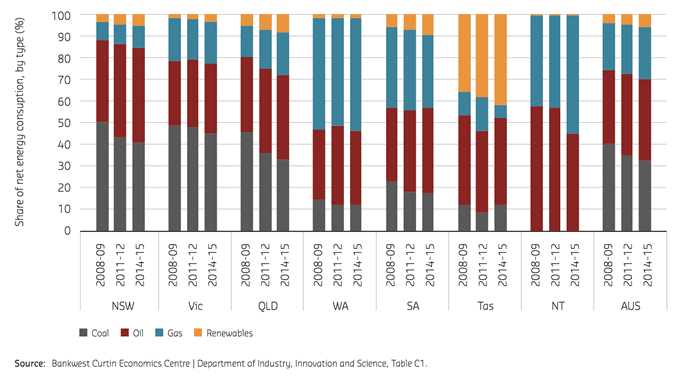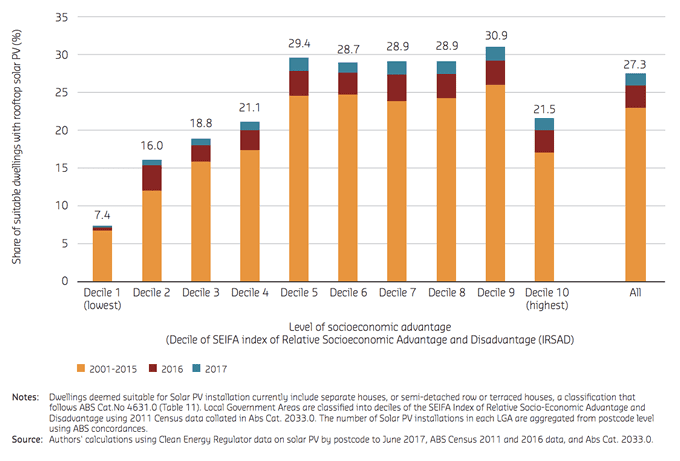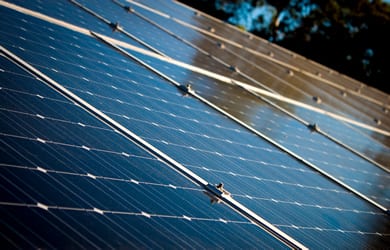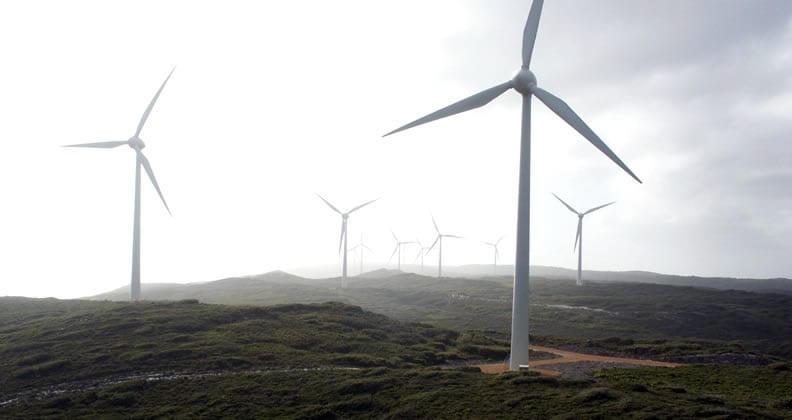By 2040, global investment in solar and wind-power generation will surpass US$10 trillion. With glorious sunshine and notorious wind, WA should be part of the renewable-energy charge. Economists, however, are worried that out-dated policy is stalling innovation – and building a tier of ‘energy poverty’.
Stormy conversations about Australia’s energy future have been dominating national politics, particularly since June, when Chief Scientist Alan Finkel handed over the major review into the National Energy Market (NEM).
All the talk, however, is in the eastern states, where stakeholders have been debating ‘renewables’ versus ‘reliables’, and industry’s need for clarity. For months the media speculated about the government’s snub to Dr Finkel’s 50th and final recommendation – a clean energy target (CET), which to some coalition MPs was as noxious as an emissions trading scheme. Then, in mid-October, Prime Minister Turnbull sought to resolve the CET calamity by proposing a ‘National Energy Guarantee’ intended to improve supply reliability, with an emissions ‘intensity’ scheme to reduce CO2 emissions and meet Australia’s pledge to the Paris Agreement on climate change.
Now, stakeholders are waiting on modelling outcomes that support predictions of better reliability and affordability. Many in the renewables industry, however, are already convinced the emissions scheme will further repress investment in energy innovation. And for the climate-change sceptics, new titles and acronyms haven’t dispelled the whiff of an emissions trading scheme and carbon tax. Altogether, ambiguities and partisan politics have been choking progress like dirty brown coal dust.
The warming and cooling demand for gas
But why is WA disconnected from the commotion – are we still sitting cosy on our big cushion of natural gas? WA’s access to gas-fired power does reduce our vulnerability to power failures, but we’re also less relevant because the National Electricity Market (NEM) has never included WA. Instead, we have a ‘Wholesale Energy Market’ that comprises three government-owned corporations (Horizon Power, Synergy, Western Power) in the electricity supply chain.
A recent report by the Bankwest Curtin Economics Centre, titled Power to the People: WA’s Energy Future, is a timely study of WA’s energy sector and its readiness for ‘the energy revolution’. One consequence of the state’s capacity for gas-fired power is that our energy network – although just as knotty as the NEM – has developed in isolation. In the past 25 years, WA’s power consumption has almost doubled and gas has surpassed coal as our main energy source. Unlike other states that have predominantly coal-fired power generation, WA hasn’t experienced a burning need to establish large-scale renewable energy projects … or production targets.

Reflecting this, electricity supplier Synergy has announced it will soon retire several coal- and gas-generation assets; nevertheless, the State Government’s 2017 budget contained no major renewable energy projects, only a regional power station with “the ability to accommodate contributions from distributed energy sources”. WA’s road to renewables is not looking smooth, as report co-author Associate Professor Rebecca Cassells explains.
“WA is still to take substantial action and lags when it comes to investment in large-scale renewable projects. The state currently has only one such project – a 20 megawatt solar farm at Emu Downs with a project value of $50 million,” according to Cassells.
“Other states and territories have set themselves proactive policies, including renewable energy targets to reduce their carbon footprint and contribute to Australia’s emissions reduction target.”
Sunny side up … but not for all
Of course, what we do have in common with the rest of the nation is debate about energy affordability. In WA, those who’ve invested upfront in rooftop solar are able to mitigate rising electricity charges, such as the one delivered in the latest state budget. However, the statistics for rooftop solar in WA reveal a major gap in energy policy, explains Cassell’s colleague and report co-author, Dr Yashar Tarverdi.
“Low-income households are far less likely to have access to solar PV, either because they can’t make the initial capital outlay or because they rent,” he says. “There’s no incentive for landlords to install solar PV, so it’s rare for rental properties to have solar-generated energy.”
In fact, data behind the report shows that most of WA’s renewable energy is generated by solar PV in mid-to-high socioeconomic areas. Low-income households are clearly blocked from both contributing to and benefiting from solar-energy uptake.
The overarching concern of many economists is that low-income earners, who spend a much greater proportion of their household budget on energy than the average household, are at risk of ‘energy poverty’, a significant portion will be behind-the-meter ‘citizen’ networks, which raises another of Tarverdi’s concerns: the lack of new policy and regulatory frameworks to ensure equity in the exploitation of off-grid options.

Citizen utilities: ‘Uber’ energy?
The Australian Council of Social Service (ACOSS) has also warned about ‘energy stress’ and current regulatory systems. Community interest in so-called disruptive approaches for producing and distributing electricity through microgrids is surging, but without an informed regulatory system these innovations could actually increase energy costs for participating low-income households.
Research published by the national Cooperative Research Centre for Low Carbon Living discusses the emergence of ‘citizen-based power systems’ and their impact on supply utilities, and concludes that the traditional grid must adapt to accommodate distributed, bi-directional energy systems.
But under the current regulatory framework, distributed renewables are a double-edge sword, says Tarverdi. He fears the emergence of an under-regulated ‘uber energy market’ in which households invest in microgrids partly to lower their long-term energy costs, but more so to profit from selling spare generated energy to neighbouring grid users.
Another risk is that the less affluent residents who are unable to leave the main grid are burdened with the increased proportional cost of maintaining the grid connection for all to use. Which has prompted Professor Alan Duncan, who leads the Bankwest Curtin Economics Centre, to emphasise that as energy markets evolve, consumer protection is critical.
“Without proactive policies we risk a two-tiered system favouring those that can afford energy innovations over those that can’t,” Duncan warns. “WA needs an energy system that gets power to the people at the right time and right place, at acceptable prices, using technologies that will power us well into the future.

“Leadership and cooperation is needed to address the challenges, risks and policy issues to achieve this.”
So how should WA be readying for the imminent energy revolution?
To start with, Duncan says, we need emissions-reduction policies and renewable energy targets, and the government should reconsider incentives for solar installations.
Victoria’s target is 40 per cent green energy generation by 2025, and the ACT is aiming for 100 percent renewables by 2020. Tarverdi makes the point that although the targets are ambitious, it’s the vision that triggers innovation. For example, advances in lithium-ion battery storage could offer WA a top opportunity to capitalise on its high reserves of lithium and invest in the development of new li-ion technologies.
Lights out for fossil fuels?
For large-scale renewable energy networks, storage will be the clincher. A key recommendation from the Finkel Review was that future renewable energy projects be able to produce dispatchable power – that is, to store and then release energy to accommodate demand fluctuation and the intermittent nature of renewable energy sources. The BCEC report also highlights the importance of adequate storage options, as well as balancing efficiencies in any conceivable future of large-scale renewables solutions. Efficient energy storage is a major global R&D mission that will certainly reach its goal; could it then be lights out for fossil fuels?
While technological advances and retail competition will continue to drive cost and performance improvements for solar/storage systems, Duncan believes that no single energy source will deliver a national panacea for lower energy costs, lower emissions and meeting our commitment to the Paris climate accord. The best strategy, he says, is to optimise and integrate current and emerging energy technologies, and carefully manage the market changes.
Regulation authorities are now getting the call to action. Western Power recently requested the Australian Energy Market Commission amend a rule that prevents distribution businesses using individual power systems as an alternative to a grid connection, particularly in rural areas. The Commission accepted that, due to declining costs of solar PV and batteries, providing an off-grid supply can be cheaper than maintaining the power lines that link remote customers to the grid, but that “a range of laws, rules and jurisdictional instruments is required to address these issues”.
The decision reflects the regulatory wilderness of Australian energy markets in transition, and the urgent need for continued research in this area. Certainly, the path is tangled, but clearly it’s time for Western Australia to join the mission and start navigating to a sustainable energy future.



